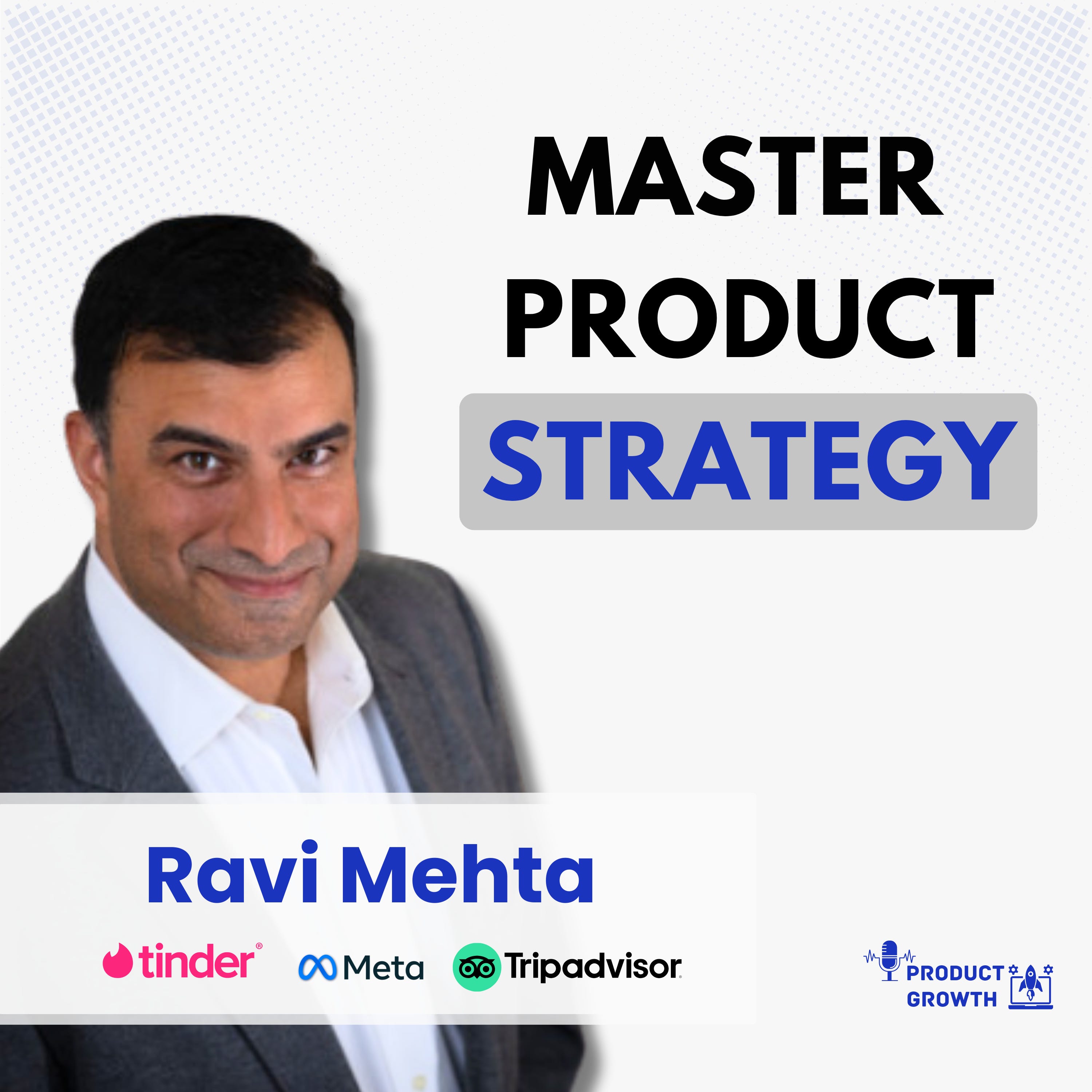Write a Great Product Strategy: Lessons from Ravi Mehta | Former CPO at Tinder, Director at Meta, VP at TripAdvisor
Podcast: Product Growth PodcastPublished On: Fri Sep 06 2024
Description: Product strategy documents are amongst the hardest to write as PMs or Product Leaders. How do you them well?In today's episode Ravi Mehta and I deep dive into how to build clear product strategies. We cover everything FROM components of a good product strategy TO all the frameworks that you will ever need.Ravi is the Co-Founder and CEO of Outpace, a company that is reinventing the way people learn and grow. He has significant experience in product management and development, having previously held roles such as CPO at Tinder, Director of Product at Facebook, and VP of Product at TripAdvisor.Brought to you by:Attio: The next generation CRMOneSchema: Automate CSV imports directly in your productCello: Your all-in-one platform for partner & user referralsIn today’s episode, we cover:The Importance of Product Strategy | 02:50Deep Dive into the Product Strategy Stack | 17:06Wireframes as a Strategy Component: Ravi’s Hot Take | 32:18Building Strategy: From Planning to Execution | 41:23Strategy to Action: A New Approach to Goal-Setting with NCTs | 54:53Selective Micromanagement: When to Step In vs. Step Back | 01:00:54The Shape of PM Framework | 01:13:20Here are the key lessons from our conversation:1. Using Visuals in Your Product Strategy is NecessaryRavi explains how having 15-20 wireframes in your product strategy can be beneficial. Wireframes provide a strong understanding of what's being proposed.Without any visual, stakeholders might have different takeaways which may lead to a long-term misalignment among teams.The use of wireframes helps align stakeholders, clarify trade-offs, and ensure everyone has a shared vision of the product's direction.2. A new approach to Goal-Setting: NCTs over OKRsRavi presents Narratives, Commitments, and Tasks (NCTs) as an alternative to conventional OKRs. This framework solves a few common challenges with OKRs by providing context (the narrative), clear expectations (commitments), and actionable steps (tasks).NCTs help teams to balance strategy and execution, ensuring goals are both meaningful and achievable.3. The Shape of a PM FrameworkThe "Shape of a PM" framework identifies 12 key competencies across four areas: product execution, customer insight, product strategy, and influencing people.Understanding that no PM excels in all areas helps in building a balanced team.The framework relies on the fact that no PM specialises in all areas. It is based on the foundation that teams should be well-rounded, even if individuals are "weak" in certain areas.4. Selective MicromanagementContrary to popular belief, selective micromanagement can be beneficial. Ravi mentions how good leaders should have a dynamic range: an ability to zoom in on details when necessary and zoom out for the big picture.This approach helps ensure alignment between strategy and execution, particularly when teams are facing challenges or misalignment.Check out the episode for all the details and the amazing frameworks shared by Ravi.Where to find Ravi:LinkedInTwitterWebsiteWe have some great podcasts coming from Sam Kawsarani, Mirela Mus, and Maja Voje. I’m so excited to share them with all of you. Get full access to Product Growth at www.news.aakashg.com/subscribe
The note was deleted
The note was saved
Your message was sent
